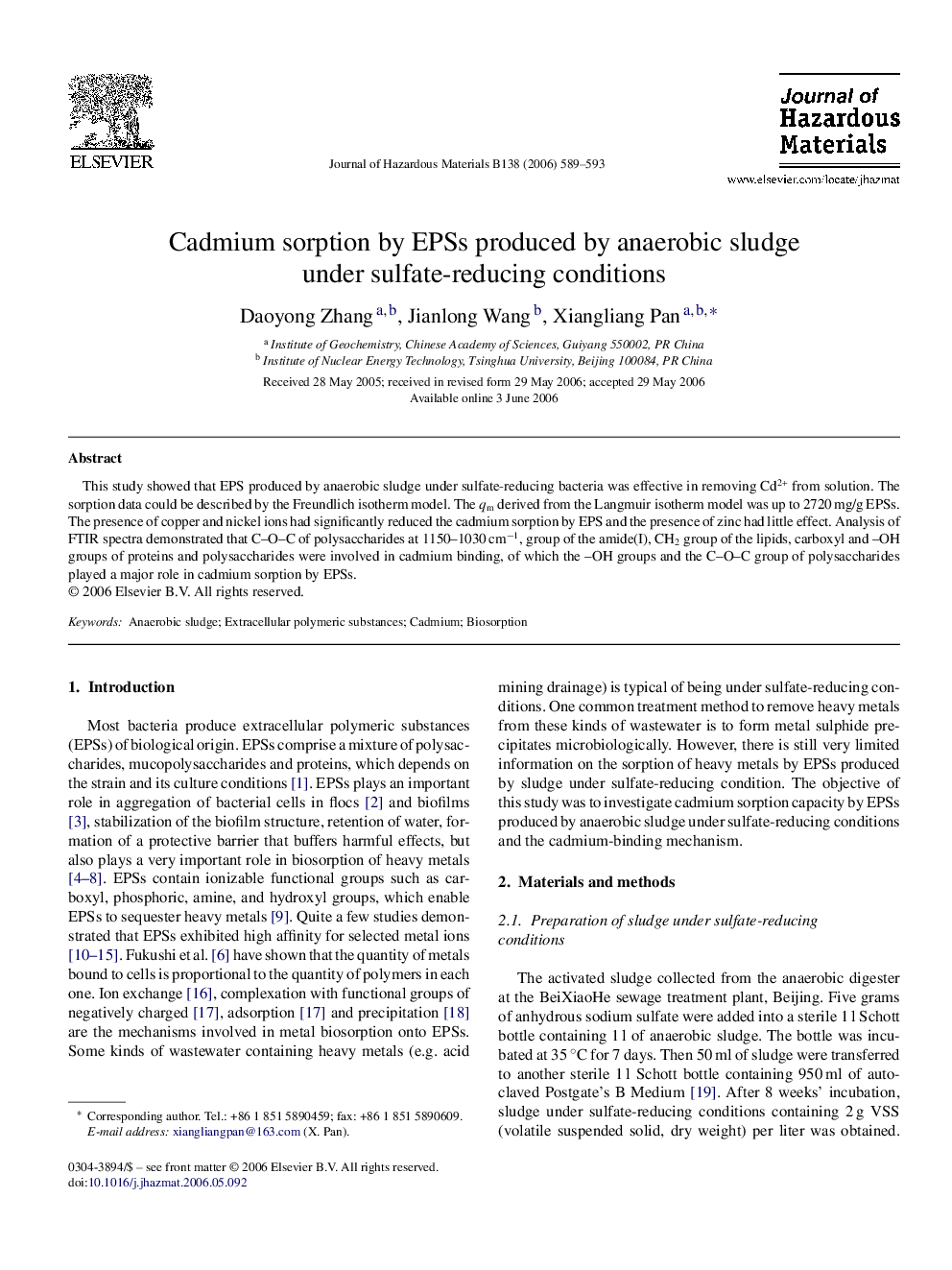| Article ID | Journal | Published Year | Pages | File Type |
|---|---|---|---|---|
| 585071 | Journal of Hazardous Materials | 2006 | 5 Pages |
Abstract
This study showed that EPS produced by anaerobic sludge under sulfate-reducing bacteria was effective in removing Cd2+ from solution. The sorption data could be described by the Freundlich isotherm model. The qm derived from the Langmuir isotherm model was up to 2720 mg/g EPSs. The presence of copper and nickel ions had significantly reduced the cadmium sorption by EPS and the presence of zinc had little effect. Analysis of FTIR spectra demonstrated that C-O-C of polysaccharides at 1150-1030 cmâ1, group of the amide(I), CH2 group of the lipids, carboxyl and -OH groups of proteins and polysaccharides were involved in cadmium binding, of which the -OH groups and the C-O-C group of polysaccharides played a major role in cadmium sorption by EPSs.
Related Topics
Physical Sciences and Engineering
Chemical Engineering
Chemical Health and Safety
Authors
Daoyong Zhang, Jianlong Wang, Xiangliang Pan,
